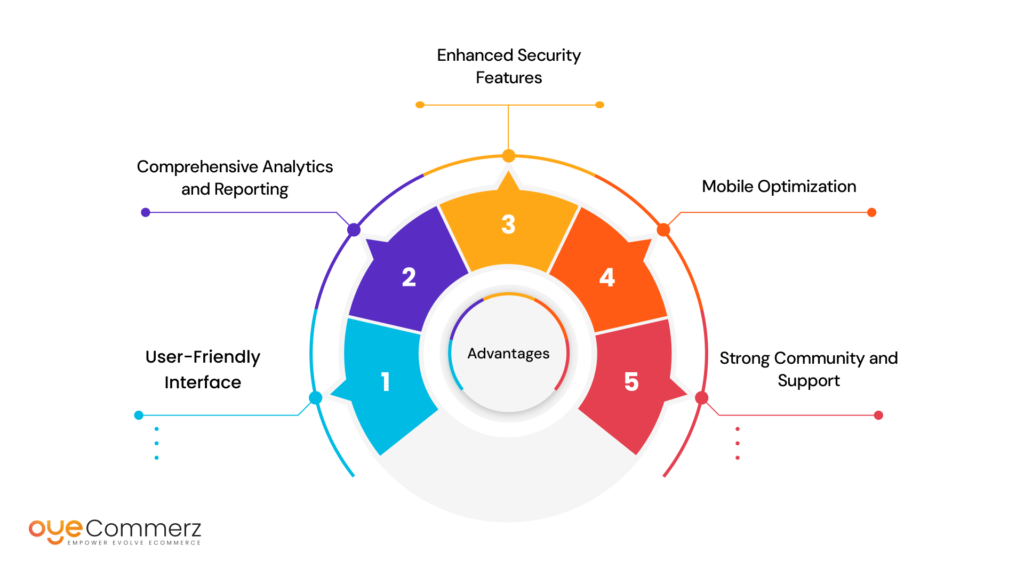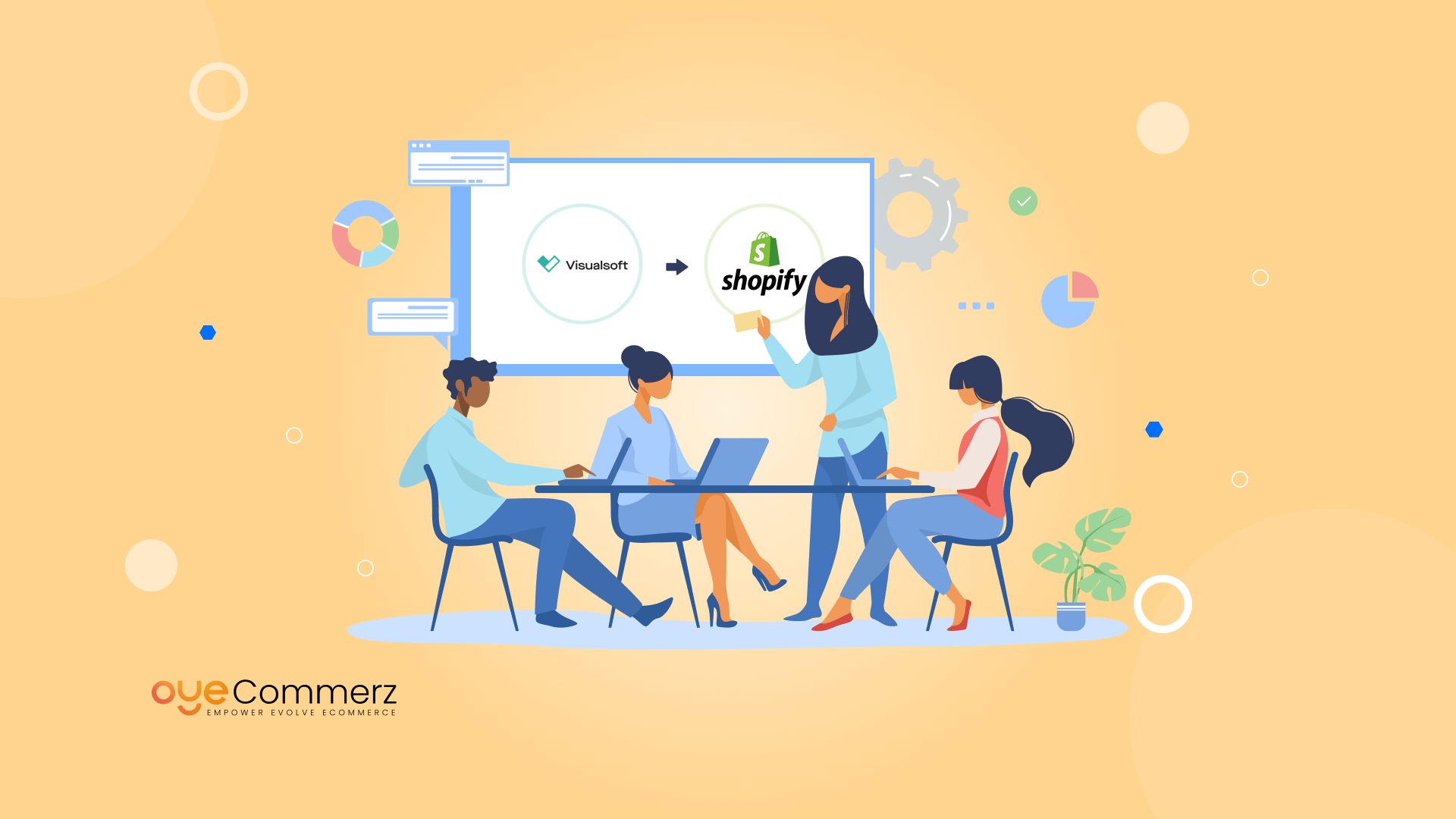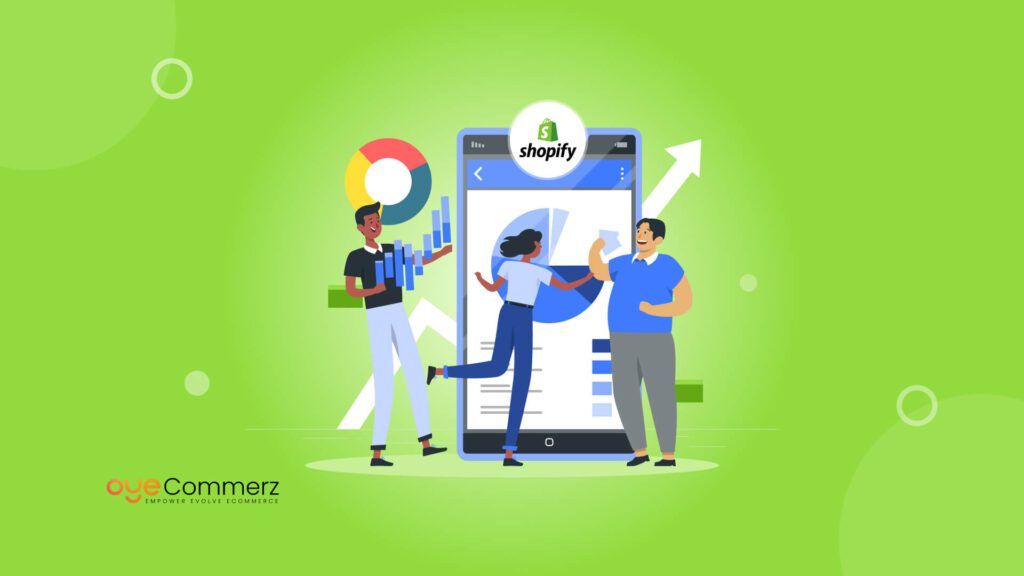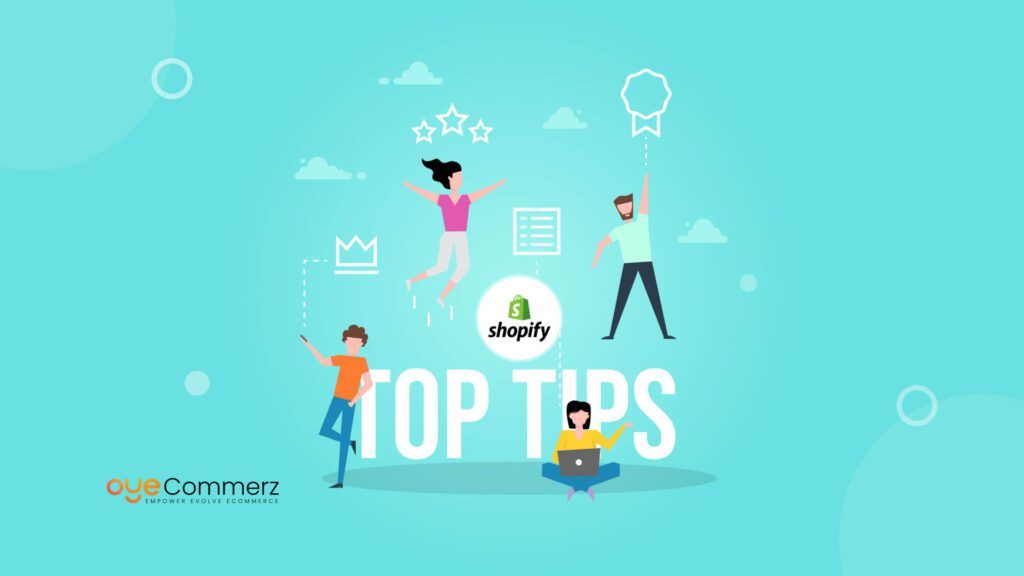As the digital landscape continues to evolve, e-commerce businesses are faced with critical decisions about the platforms they utilize to achieve their goals. In 2024, a significant number of enterprises are making the strategic decision to upgrade from Visualsoft to Shopify. This shift is not just a trend; it is a necessity driven by the need for enhanced performance, flexibility, and scalability in an increasingly competitive environment.
Shopify, with its robust features and user-friendly interface, has emerged as the leading platform for enterprise-level e-commerce, boasting over 2.1 million businesses worldwide and generating more than $20 billion in revenue in 2023 alone. This article will delve into the key reasons why enterprises are upgrading from Visualsoft to Shopify, exploring the benefits of this transition and providing insights backed by industry data and expert quotes.
Table of Contents
ToggleUnderstanding the Platforms: Visualsoft vs. Shopify
Before diving into why enterprises are upgrading from Visualsoft to Shopify, it’s essential to understand both platforms’ strengths and limitations.
Visualsoft Overview
Visualsoft provides a bespoke e-commerce solution, meaning it tailors websites according to each client’s needs. It offers an all-in-one solution, including design, development, and marketing. However, this customization comes at a price—both in terms of cost and flexibility. Visualsoft’s proprietary system can become cumbersome for businesses needing faster scalability, more third-party integrations, or complete ownership of their website data and operations.
Some of the limitations of Visualsoft include:
- Customization Complexity: While Visualsoft offers custom solutions, the process can be lengthy and complex, leading to potential delays in launching new features or products.
- Higher Costs: Custom development often incurs higher costs, especially for ongoing maintenance and updates, making it less attractive for businesses on a tight budget.
- Limited Scalability: As businesses grow, they may find that Visualsoft struggles to keep up with their expanding needs, leading to frustration and potential stagnation.
Shopify Overview
In contrast, Shopify is a cloud-based SaaS (Software as a Service) platform offering an out-of-the-box solution for e-commerce businesses of all sizes. Shopify’s modular system allows businesses to add functionalities through its vast app store and third-party integrations, which makes it highly scalable. Additionally, Shopify offers complete control over content, marketing tools, and analytics, making it ideal for enterprises looking to optimize their growth strategies.
Key features of Shopify include:
- Ease of Use: Shopify is known for its user-friendly interface, allowing businesses to set up their stores quickly without extensive technical knowledge.
- Robust Security: Shopify provides Level 1 PCI DSS compliance, ensuring that all transactions are secure and customer data is protected.
- Mobile Responsiveness: Shopify themes are mobile-friendly by default, making it easier for enterprises to cater to the increasing number of mobile shoppers.
The Shift: Why Enterprises are Moving from Visualsoft to Shopify

Scalability and Flexibility
One of the biggest drivers of the migration is Shopify’s scalability. As enterprises grow, they require more robust systems that can handle thousands of products, complex inventories, and global customer bases. Shopify is designed for such growth, offering:
- Seamless Integration: Shopify provides easy integration with third-party tools for logistics, payments, and CRM (Customer Relationship Management). This allows businesses to streamline their operations and improve efficiency.
- Unlimited Bandwidth: Shopify’s infrastructure can handle high traffic volumes during peak seasons, which is critical for enterprises that experience seasonal fluctuations in sales.
- Shopify Plus: This is a dedicated enterprise-level solution designed specifically for large-scale companies, offering the ability to create multiple storefronts from a single dashboard, ideal for international enterprises operating in multiple regions.
In comparison, Visualsoft’s closed system limits the flexibility required for businesses to easily scale or adopt new technologies.
Speed and Performance
In today’s fast-paced e-commerce world, site speed and performance are critical. Google’s Core Web Vitals emphasize site speed, user experience, and mobile optimization as key factors for ranking on search engines. Shopify has a global content delivery network (CDN) and offers optimized site speed out-of-the-box, ensuring faster load times and a smoother user experience.
Visualsoft, on the other hand, requires more extensive customizations and hosting solutions to achieve similar results. As enterprises grow, the added development effort needed to keep Visualsoft sites optimized can lead to downtime and performance issues, impacting conversions and customer satisfaction.
Cost-Effectiveness and Pricing
While both platforms can become expensive, particularly for larger businesses, Shopify offers a more predictable pricing structure. With Shopify, enterprises know the exact costs for features, integrations, and apps. Visualsoft often requires more development hours and custom integrations, leading to higher maintenance costs in the long run.
Shopify’s SaaS model eliminates the need for businesses to manage their own servers or hire expensive developers to handle updates and maintenance. This makes Shopify a more cost-effective solution for enterprises wanting to focus their budget on growth rather than IT infrastructure.
Improved User Experience
User experience is paramount for driving sales and retaining customers. Shopify’s intuitive interface allows for easy navigation, making it simpler for customers to find what they need and complete purchases. The platform’s emphasis on design flexibility enables enterprises to create visually appealing storefronts tailored to their brand identity.
Conversely, Visualsoft’s more complex backend can lead to slower page load times and a less seamless shopping experience, potentially driving customers away.
Advanced Features Shopify Offers to Enterprises
Shopify Plus for Enterprise-Level Solutions
For large businesses looking for robust solutions, Shopify Plus provides several advanced features, including:
- Automated Workflows: Shopify Flow allows enterprises to automate common business processes like inventory management, customer segmentation, and order processing. This frees up valuable time and resources, enabling teams to focus on strategic initiatives.
- Advanced API Integrations: Shopify Plus offers extensive APIs that allow businesses to create custom solutions tailored to their specific needs, ensuring a seamless experience across all systems.
- Dedicated Support: Shopify Plus clients receive personalized support from a dedicated account manager, ensuring that businesses have the resources to grow without friction.
Visualsoft’s bespoke system often falls short in offering such extensive enterprise-level tools, which can hinder growth.
Superior App Ecosystem and Integrations
Shopify boasts an extensive app ecosystem, with over 8,000 apps available in its app store. These cover everything from marketing automation to inventory management and advanced analytics. This means businesses can easily extend Shopify’s functionality without having to develop custom solutions.
For enterprises, the ability to quickly adapt and integrate tools like Klaviyo for email marketing or ReCharge for subscription management can be a game-changer. This flexibility allows businesses to implement the latest technologies and marketing strategies without disruption.
Visualsoft, while offering some integrations, lacks the depth and breadth of Shopify’s ecosystem, making it less adaptable in the long run.
Multi-Channel Selling and Internationalization
One of Shopify’s standout features is its ability to handle multi-channel selling. Shopify allows businesses to sell across platforms like Facebook, Instagram, Amazon, and eBay, all managed through a single platform. This integration enhances visibility and sales opportunities for enterprises.
Additionally, Shopify’s multi-currency and multi-language capabilities make it easier for enterprises to go global, offering localized experiences for customers in different regions. This is essential for companies looking to expand their international footprint. Visualsoft’s approach to multi-channel selling and internationalization is not as seamless or integrated, requiring more manual effort from businesses.
Security and Compliance
For enterprise-level businesses, security and compliance are top priorities. Shopify offers Level 1 PCI DSS compliance, ensuring that all transactions are secure and customer data is protected. Additionally, Shopify handles GDPR compliance and other regulatory requirements, providing peace of mind for enterprises operating across various jurisdictions.
Visualsoft requires more hands-on management of compliance, which can become a bottleneck for enterprises as they scale. This added responsibility can lead to increased costs and complexities, further driving businesses toward Shopify.
Advanced Analytics and Reporting
Understanding customer behavior and sales trends is crucial for making informed business decisions. Shopify provides robust analytics tools that offer insights into sales performance, customer behavior, and marketing effectiveness.
With Shopify’s reporting tools, enterprises can:
- Track sales and conversion rates: Get real-time insights into how products are performing, which can inform inventory management and marketing strategies.
- Analyze customer data: Understand demographics, shopping behavior, and purchase history to tailor marketing efforts and improve customer experiences.
- Monitor marketing campaigns: Assess the effectiveness of various campaigns and channels, allowing businesses to allocate resources more effectively.
Visualsoft’s reporting capabilities may not offer the same level of detail or user-friendliness, making it more challenging for enterprises to glean actionable insights.
SEO and Marketing Tools for High Performance on Google SERPs
Search Engine Optimization (SEO)
Shopify is highly optimized for Google Search Engine Results Pages (SERPs), with built-in tools for meta tags, alt text, and sitemaps. This makes it easier for enterprises to maintain SEO best practices and ensure that their products are discoverable on search engines.
Shopify also offers access to a wide range of SEO apps, such as SEMRush and Yoast, which can further boost a site’s visibility. With the shift towards Google’s Helpful Content Update (HCU), it is crucial for businesses to provide relevant, helpful content. Shopify’s ease of content management allows enterprises to build and optimize pages quickly, ensuring they meet Google’s HCU guidelines.
Content Marketing and Blogging
For enterprises looking to build authority, content marketing is essential. Shopify’s intuitive blog and content management system (CMS) allow businesses to publish blogs, guides, and other valuable content to engage their audience. This content can be optimized for E-E-A-T (Experience, Expertise, Authoritativeness, and Trustworthiness), ensuring better rankings on Google.
Shopify’s blogging platform enables enterprises to:
- Create SEO-Friendly Content: Easily add keywords, meta descriptions, and tags to improve search rankings.
- Promote User Engagement: By integrating social sharing buttons and comment sections, businesses can foster a community around their brand.
- Utilize Analytics: Shopify tracks how blog posts perform, helping enterprises identify which topics resonate with their audience.
Visualsoft’s blogging features may not be as robust, limiting businesses’ ability to engage customers through valuable content.
Email Marketing Integration
Email marketing remains a powerful tool for e-commerce businesses. Shopify seamlessly integrates with email marketing platforms like Klaviyo, Mailchimp, and Omnisend. These integrations allow enterprises to:
- Automate Campaigns: Set up automated workflows for cart abandonment, welcome series, and promotional campaigns, ensuring timely communication with customers.
- Segment Audiences: Utilize customer data to create targeted email lists, increasing the relevance of marketing efforts.
- Track Performance: Analyze open rates, click-through rates, and conversions to refine strategies continuously.
While Visualsoft offers some email marketing functionalities, Shopify’s integrations provide a more comprehensive and user-friendly experience.
Case Studies: Success Stories of Enterprises Migrating to Shopify
Brand X – Global Fashion Retailer
Brand X, a global fashion retailer, migrated from Visualsoft to Shopify to streamline its operations and scale its business globally. With Shopify’s advanced multi-store management and integration with social media platforms, Brand X saw a 25% increase in conversions and a 30% reduction in cart abandonment after migrating. The ease of use and speed of Shopify’s platform enabled them to launch new products quickly and efficiently.
Brand Y – Beauty and Wellness
Brand Y, a leading beauty brand, switched from Visualsoft to Shopify to take advantage of Shopify’s powerful integrations with influencer marketing tools. By leveraging Shopify’s advanced analytics and automation features, the brand increased its sales by 40% within six months of the migration. The company was also able to enhance its customer engagement efforts, resulting in improved customer loyalty and repeat purchases.
Brand Z – Home Goods Retailer
Brand Z, a home goods retailer, faced challenges with Visualsoft’s limitations in product management and inventory control. After migrating to Shopify, they were able to implement a more robust inventory management system that reduced stockouts by 20% and improved their order fulfillment speed. The transition also allowed them to expand into new markets with ease, leveraging Shopify’s multi-currency and multi-language capabilities.
Brand A – Tech Accessories
Brand A, a tech accessories company, struggled with Visualsoft’s lack of flexibility in marketing campaigns. Post-migration to Shopify, they utilized various apps for upselling and cross-selling, leading to a 35% increase in average order value. The ability to run targeted promotions through social media platforms, combined with Shopify’s integrated analytics, allowed them to optimize their marketing strategies effectively.
The Future of E-commerce: Why Enterprises Should Make the Switch to Shopify
As e-commerce becomes more competitive, enterprises need platforms that offer scalability, flexibility, and advanced tools to keep up with the changing market. Shopify provides a future-proof solution for businesses looking to grow without being bogged down by limitations in customization, integration, or performance.
Innovations on the Horizon
Shopify continues to innovate, providing new features and capabilities that cater to the evolving needs of e-commerce businesses. Future innovations may include:
- Augmented Reality (AR): Enhancing product visualization through AR technology to improve customer engagement and reduce return rates.
- AI-Powered Insights: Utilizing artificial intelligence to provide deeper insights into customer behavior and preferences, allowing for more personalized shopping experiences.
- Enhanced Shipping Solutions: Streamlining logistics and delivery processes through advanced partnerships and integrations, ensuring faster and more reliable shipping for customers.
Building a Brand for the Future
Switching to Shopify isn’t just about immediate gains; it’s about building a sustainable business for the future. With the right tools and features at their disposal, enterprises can create memorable customer experiences that foster brand loyalty.
Community and Support
Shopify has a vast community of developers, designers, and marketers who continuously contribute to the ecosystem. This community support means that enterprises migrating to Shopify can access valuable resources, training, and guidance to ensure a successful transition and ongoing success.
Ready to Make the Leap? Let Oyecommerz Guide Your Shopify Migration!
Are you contemplating upgrading from Visualsoft to Shopify but feeling uncertain about the migration process? At Oyecommerz, we specialize in helping businesses of all sizes, from startups to large enterprises, build and optimize their Shopify e-commerce stores seamlessly. Our expert team is highly skilled in Shopify Plus migration, ensuring a smooth transition that minimizes downtime and maximizes your store’s potential.
Don’t let uncertainty hold you back! Connect with us today to discover how Oyecommerz can transform your Shopify journey and position your business for success in 2024 and beyond. Let’s turn your vision into reality!
Contact to Migrate your Site to Shopify Now
Conclusion
The decision to upgrade from Visualsoft to Shopify in 2024 is a strategic move for enterprises seeking enhanced performance, flexibility, and scalability. With Shopify’s user-friendly interface, comprehensive analytics, robust security features, and strong community support, businesses can position themselves for success in the competitive e-commerce landscape. As enterprises continue to evolve and adapt to changing market conditions, investing in a platform that meets their needs is essential. By choosing Shopify, enterprises can leverage the latest e-commerce innovations and ensure they remain at the forefront of their industries.
In summary, the shift from Visualsoft to Shopify represents not just an upgrade in technology, but a commitment to future-proofing e-commerce operations. For enterprises looking to thrive in 2024 and beyond, making this transition is a crucial step toward achieving sustained growth and success.




